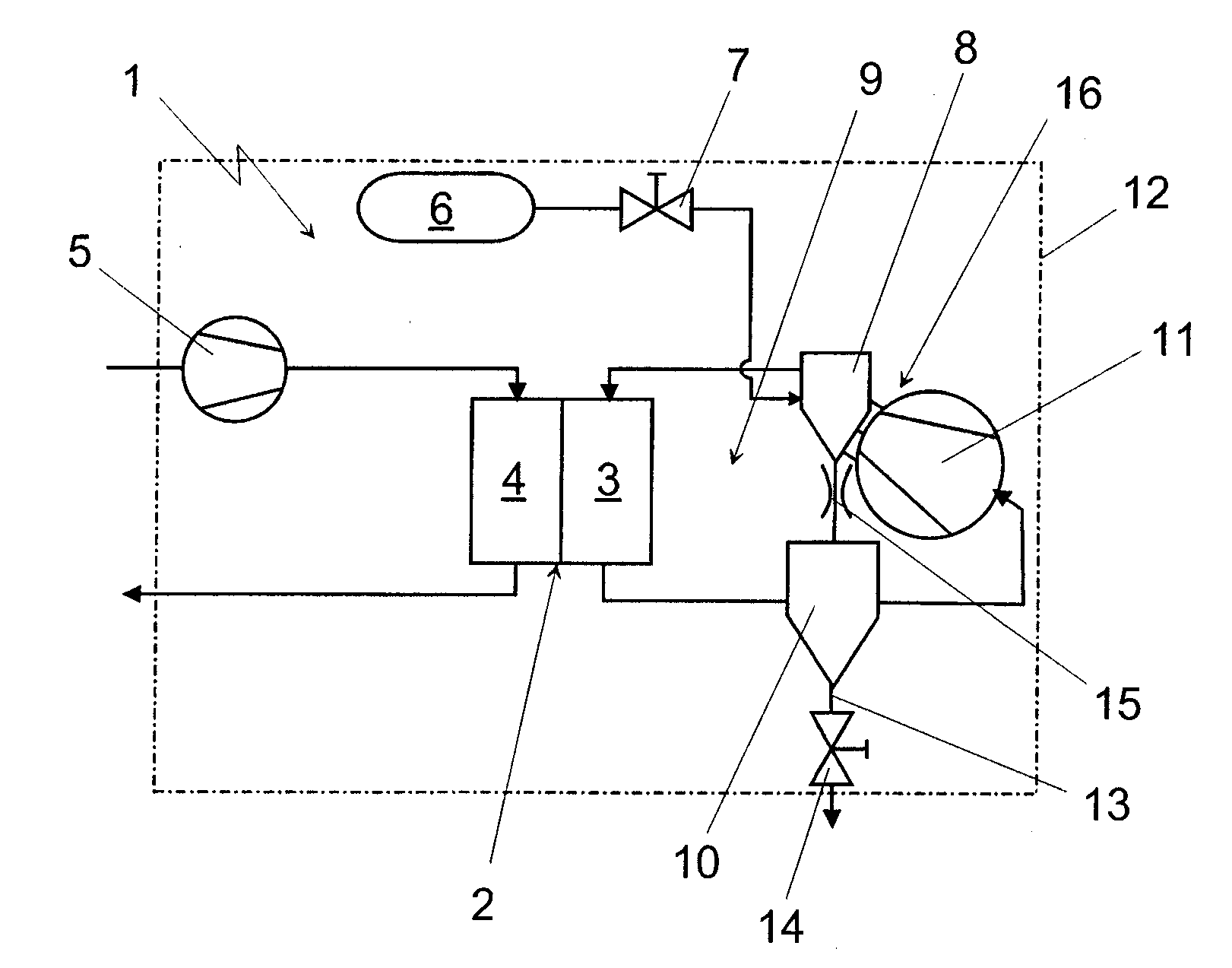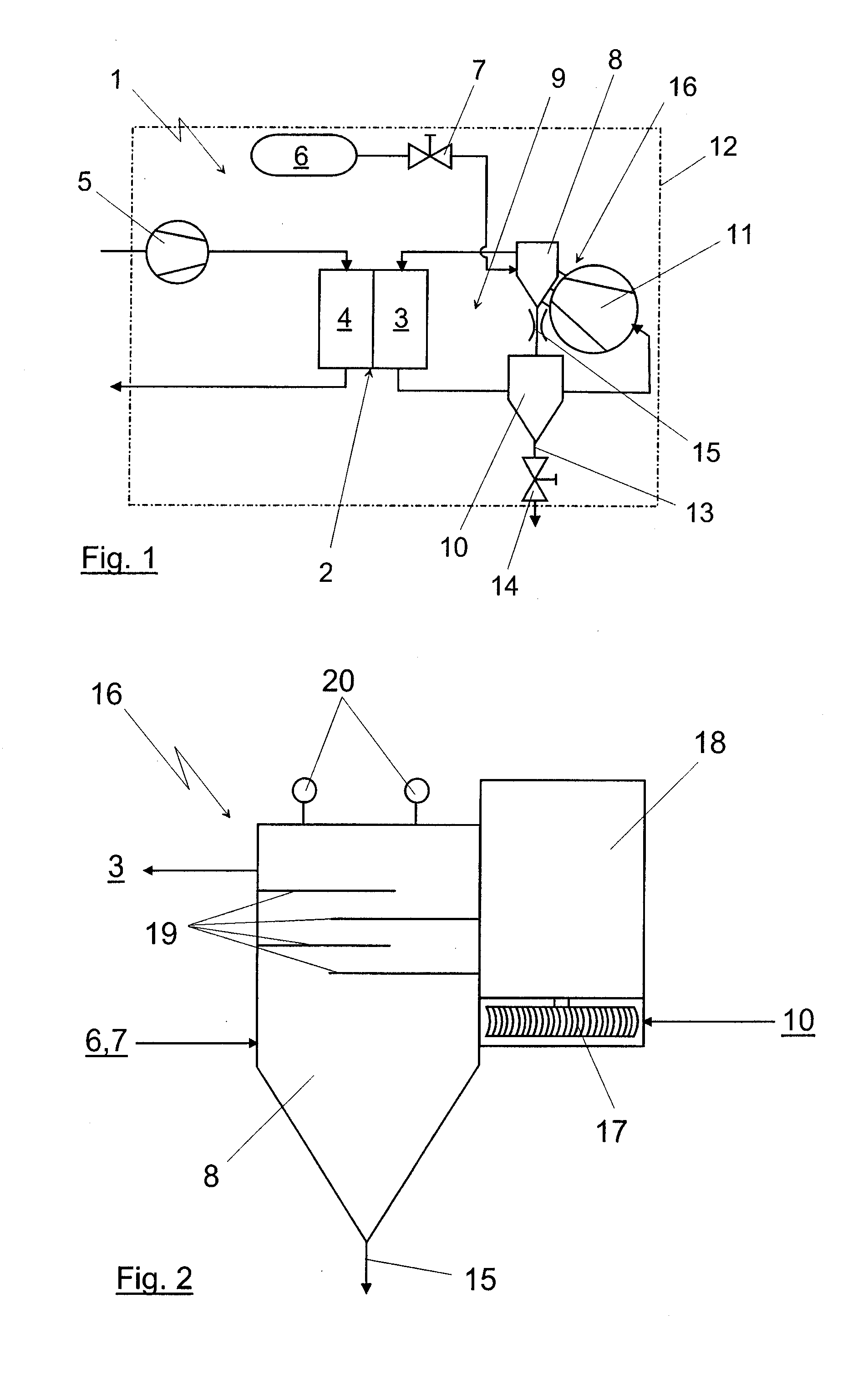Fuel Cell System Having a Fluid Separator in the Anode Circuit
a fuel cell and fluid separator technology, applied in the field of fuel cell systems with an anode circuit, can solve the problems of system restart malfunction, risk of freezing, droplets tending to condensate out, etc., and achieve the effect of simple, safe and reliable operating structure of the anode circuit, compact configuration and avoiding freezing
- Summary
- Abstract
- Description
- Claims
- Application Information
AI Technical Summary
Benefits of technology
Problems solved by technology
Method used
Image
Examples
Embodiment Construction
[0015]The illustration of FIG. 1 shows a fuel cell system 1, the core of which is a fuel cell 2 having an anode region 3 and a cathode region 4, and which may for example be a stack of PEM fuel cells. Air as an oxygen-containing gas is supplied to the cathode region 4 via an air delivery device 5. The air discharged from the cathode region 4 can be discharged to the environment either directly or via components not shown in the drawing, for example a burner, a turbine or the like.
[0016]The anode region 3 is supplied with hydrogen from a compressed-gas accumulator 6 in which the hydrogen is stored as a gas under high pressure. The hydrogen flows via a shut-off valve 7, in the region of which it is expanded, into a liquid separator 8 (described in detail below) and into the anode region 3. From the anode region 3, the unused residual gas flows in an anode circuit 9 via a second liquid separator 10 and a recirculation delivery device 11 into the region of the water trap 8 and can there...
PUM
| Property | Measurement | Unit |
|---|---|---|
| electric energy | aaaaa | aaaaa |
| pressure loss | aaaaa | aaaaa |
| freezing | aaaaa | aaaaa |
Abstract
Description
Claims
Application Information
 Login to View More
Login to View More - R&D
- Intellectual Property
- Life Sciences
- Materials
- Tech Scout
- Unparalleled Data Quality
- Higher Quality Content
- 60% Fewer Hallucinations
Browse by: Latest US Patents, China's latest patents, Technical Efficacy Thesaurus, Application Domain, Technology Topic, Popular Technical Reports.
© 2025 PatSnap. All rights reserved.Legal|Privacy policy|Modern Slavery Act Transparency Statement|Sitemap|About US| Contact US: help@patsnap.com


